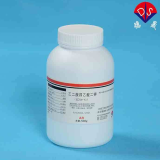Chinese VersionChina Suppliers > Hubei new DE sheng material science and technology co., LTD. > Key points for using EDTA-K2 as an anticoagulant for blood collection
- Search Product
-
-
- Region :China/Hubei
- Tel : +86-18971041571
- Fax :
- Email :vickyzhao@whdschem.com
- URL :
- Add :Guanggu United Science and Technology City C8, Ezhou City, Hubei Province
- Details for Key points for using EDTA-K2 as an anticoagulant for blood collection
-
Key points for using EDTA-K2 as an anticoagulant for blood collection
Category : Other Chemicals

CAS NO : 25102-12-9 EC NO : MF : C10H12K2N2O8 MW : 366.4086 Specification : White Powder Packing : 500g/bottle Product description : EDTA-K2 refers to potassium ethylenediaminetetraacetate, which is an EDTA salt commonly used as an anticoagulant in vacuum blood collection. Due to its wide range of applications, its usage methods vary when not in use. Here are the key points for its use as an anticoagulant. EDTA-K2 blood anticoagulation principle: EDTA dipotassium has a molecular weight of 404.6 and a pH of 3.8-5.8. It is usually prepared by reacting EDTA with potassium hydroxide, and then crystallized, dehydrated, and dried by controlling the pH to obtain the finished powder. When it is mixed into a solution, it will dissociate EDTA anions and EDTA acids, which can quickly chelate calcium ions in the blood, thereby preventing blood coagulation and inhibiting platelet aggregation. The difference between EDTA-K2 and other anticoagulants: EDTA dipotassium is commonly used as an anticoagulant for blood cell counting, with a lower melting point and slower anticoagulation speed than EDTA tripotassium; But its solubility is higher than that of EDTA disodium, so EDTA disodium is used less; Sodium citrate is generally used as an anticoagulant in coagulation tests (3.2%, 1:9) and blood sedimentation tubes (3.8%, 1:4). Key points for preparing EDTA-K2 anticoagulant solution: According to the requirements of Appendix NC of YY0314-2007 standard, the content of EDTA-K2 and EDTA-K3 in each mL of blood is 1.5-2.2mg. When preparing the reagent, we took the intermediate value of 1.8mg/mL. Follow the following steps when configuring: 1. Firstly, determine the amount of blood collected and the amount of anticoagulant added inside the blood collection vessel. Typically, a blood collection volume of 2mL is required, and the amount of anticoagulant added is 20uL. Therefore, the prepared EDTA potassium concentration is 1.8 * 2/0.02=180mg/mL, which is 180g/L. 2. Weigh the amount of EDTA dipotassium based on the volume of the prepared solution. For example, if 500mL is prepared, it is 90g, and if 2L is prepared, it is 360g. According to the addition amount of 20uL per tube, 2L of potassium dioxide solution can be applied to 100000 anticoagulant tubes. 3. The prepared solution should be stored at a low temperature of 0-4 ℃ for no more than 7 days, so it is best to prepare and use it immediately. It should be noted that if the blood collection volume inside the anticoagulant tube is 3mL or 5mL, the concentration of EDTA dipotassium solution can also be adjusted to 180g/L without increasing its concentration. However, limited consideration should be given to increasing the amount of EDTA-K2 added in each tube to 30uL or 50uL, as the solubility of EDTA-K2 is limited, and excessive concentration may cause local osmotic pressure to increase, leading to local blood cell rupture and hemolysis. When using EDTA potassium anticoagulant tubes for blood collection, it is also important to note that anticoagulation with EDTA salts is not irreversible, and testing should be completed within 24 hours after blood collection. The storage time of EDTA salt anticoagulant specimens is: the white blood cell count can be stored for 48 hours at 4 ℃, and not more than 24 hours at 23 ℃. Platelet count can be stored at 4 ℃ for 24 hours. EDTA salts can inhibit platelet aggregation, but they cannot completely prevent platelet aggregation. Sodium citrate anticoagulants can be used for platelet testing validation. Each kilogram of EDTA-K2 can meet the use of nearly 300000 anticoagulant tubes, with a cost of only a few hundred yuan, but it can affect the detection of hundreds of thousands of samples. Therefore, it is recommended to choose an old brand blood collection reagent manufacturer like Desheng, and use it together with its separation gel to ensure high-quality blood collection tubes and high-quality blood samples. Uses : Blood collection additive Synonyms : EDTA-2K•2H20;2K;EDTA, Dipotassium Salt;Ethylenediaminetetraacetic acid, dipotassium salt;Ethylenediaminetetraacetic acid, dipotassium salt dihydrate;Ethylenediamine-N,N,N',N'-tetraacetic acid, dipotassium salt, dihydrate;Ethylenediaminetetraacetic acid,dipotassium salt dihydrate;EDTA-2K·2H20;acetate, 2,2',2'',2'''-(1,2-ethanediyldinitrilo)tetrakis-, potassium salt (1:2);Ethylenediaminetetraacetic acid dipotassium salt dihydrate;Ethylenedinitrilotetraacetic acid dipotassium salt dihydrate; Molecular Structure : 
- more>>Other Products
-
- • Biological buffer 3- [N, N-di (hydroxyethyl) amino] -2-hydroxypropanesulfonic acid DIPSO
- • Luminol Sodium Salt
- • 4-Aminophthalhydrazide
- • acridinium ester DMAE-NHS
- • acridinium ester NSP-DMAE-NHS
- • Acridine hydrochloride NSP-SA
- • Acridine hydrochloride NSP-SA-NHS
- • NSP-SA-ADH
- • acridinium ester ME-DMAE-NHS TOOS; 3-(N-Ethyl-3-Methylanilino)-2-Hydroxypropanesulfonic Acid Sodium Salt
- • TOPS; Sodium 3-(N-Ethyl-3-Methylanilino)Propanesulfonate; N-Ethyl-N-Sulfopropyl-M-Toluidine Sodium Salt
- • ADOS Sodium 3-(Ethyl(3-Methoxyphenyl)Amino)-2-Hydroxypropane-1-Sulfonate Dihydrate
- • ADPS N-Ethyl-N-(3-Sulfopropyl)-3-Methoxyaniline Sodium Salt
- • ALPS N-Ethyl-N-(3-Sulfopropyl)Aniline Sodium Salt; Sodium 3-(Ethyl(Phenyl)Amino)Propane-1-Sulfonate; Sodium
- • DAOS; Sodium 3-((3,5-Dimethoxyphenyl)(Ethyl)Amino)-2-Hydroxypropane-1-Sulfonate
- • HDAOS; N-(2-Hydroxy-3-Sulfopropyl)-3,5-Dimethoxyaniline Sodium Salt
- • MADB N,N-Bis(4-Sulfobutyl)-3,5-Dimethylaniline Disodium Salt
- • MAOS N-Ethyl-N-(2-Hydroxy-3-Sulfopropyl)-3,5-Dimethylaniline Sodium Salt Monohydrate
- • DAB 3,3',4,4'-Biphenyltetramine Tetrahydrochloride